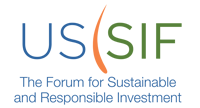The Federal Reserve bank of San Francisco recently published an extraordinary research paper acknowledging the impact of climate change. I encourage you to read the entire thing, but I’ve extracted a few points here for discussion.
Take this statement from the preamble to the paper:
“In coming decades, climate change—and efforts to limit that change and adapt to it—will have increasingly important effects on the U.S. economy. These effects and their associated risks are relevant considerations for the Federal Reserve in fulfilling its mandate for macroeconomic and financial stability.”
If you’ve been following the news around climate change, this will not come as a surprise. The facts of the matter are not in dispute. We have already seen record numbers of insurance claims due to climate instability, and we expect this trend to continue.
The more troubling aspect of the report is this:
“On top of these direct effects, climate adaptation—with spending on equipment such as air conditioners and resilient infrastructure including seawalls and fortified transportation systems—is expected to increasingly divert resources from productive capital accumulation”
This is why we use Environmental, Social, and Governance (ESG) analysis in our investment portfolios. We hope that by looking at the ways companies make decisions, and by avoiding investing in companies that score poorly on these metrics, we can build more resilient portfolios.
If it is to be, it’s up to me.
We must take climate action into our own hands, as policymakers’ hands are tied. The Fed is the most independent branch of the government when it comes to monetary policy, and now we know that they will not act because they can not. This leaves it up to us.
The fed closes the report by admitting that they are powerless to act:
“While the effects and risks of climate change are relevant factors for the Fed to consider, the Fed is not in a position to use monetary policy actively to foster a transition to a low-carbon economy. Supporting environmental sustainability and limiting climate change are not directly included in the Fed’s statutory mandate of price stability and full employment”
It is up to us as investors to understand the risks that climate change poses to our financial goals and the portfolios we build to meet them. How exposed are you to these risks? We’d love to help you find out.






